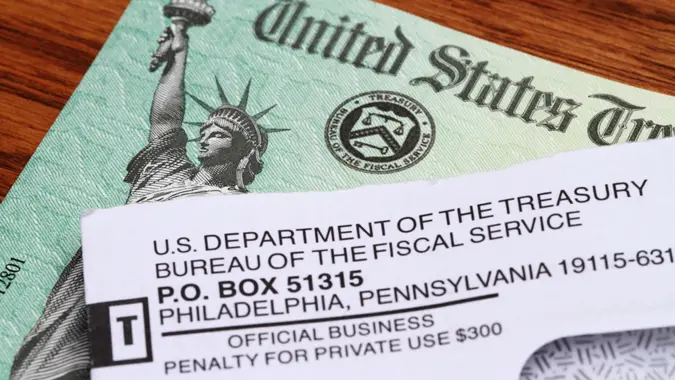Social Security Cuts: 4 Ways Middle-Class Retirees Can Stretch Their Savings

Commitment to Our Readers
GOBankingRates' editorial team is committed to bringing you unbiased reviews and information. We use data-driven methodologies to evaluate financial products and services - our reviews and ratings are not influenced by advertisers. You can read more about our editorial guidelines and our products and services review methodology.

20 Years
Helping You Live Richer

Reviewed
by Experts

Trusted by
Millions of Readers
Middle-class Americans who want to make their savings last in retirement shouldn’t lean too heavily on Social Security income. The average retirement benefit is $1,866.44 a month as of April 2024, according to the Social Security Administration. That’s not even enough to cover the typical rent in the United States, which Zillow estimates is about $2,100 a month.
Social Security checks could get even smaller if some lawmakers have their way. Benefit cuts have been proposed to help the SSA deal with a looming funding shortfall involving the Old Age and Survivors Insurance (OASI) Trust Fund. It’s expected to run out of money in about a decade, reducing funds by 23% from current levels. Although benefit cuts are not likely anytime soon, the idea won’t go away soon, either.
The best thing middle-class retirees can do is develop strategies to help their money last longer. Here are four ways they can stretch their savings.
Monitor Spending — Closely
This is something everyone should do, but it’s especially important for retirees on a fixed income. In a February column for Forbes, Certified Financial Planner David Rae recommended minimizing your fixed expenses, which “gives you the most flexibility when it comes to spending” and helps your money last longer.
“You can spend more when times are good [but] consider spending less on nice-to-have items when your home’s roof eventually needs to be replaced,” Rae wrote. “If you live there long enough, every roof likely must be replaced.”
Follow the 4% Rule
According to this rule, you should spend no more than 4% of your savings during the first year of retirement, and then adjust the total every subsequent year to account for inflation. For example, if you have $300,000 in retirement savings, you’d withdraw $12,000 your first year of retirement. If the inflation rate is 3%, you would spend $12,000 plus 3% the next year ($360), for a total $12,360.
The idea behind the 4% rule is that it will carry you through at least 25 years of retirement. You have to be careful, though. As the AARP noted, the rule is designed for worst-case scenarios, so you could end up with “a lot of unspent wealth” in your later years if you misjudge the markets.
Downsize
One sure-fire way to reduce your expenses and stretch your savings is to move someplace smaller — and cheaper. If you’re still living in the same house you had when the kids were at home, consider selling it and moving to a smaller space. Not only do smaller homes tend to cost less, but as John Hancock noted in a blog, they are also more cost-efficient because they typically have lower utility bills and property taxes.
Minimize Taxes
According to Rae, tax planning might be even more important (and complicated) in retirement. At the very least, your tax planning should help you avoid increases in your Medicare premiums and avoid the Medicare surtax on investment income. Meet with a tax planner to figure out the most tax-friendly ways to deal with individual retirement account and 401(k) distributions, Medicare premiums and Social Security income to reduce your taxes and help your savings last longer.
 Written by
Written by  Edited by
Edited by 

























